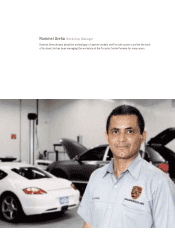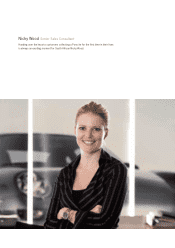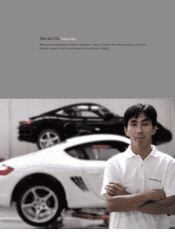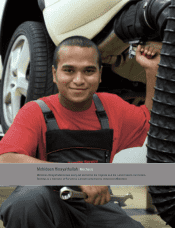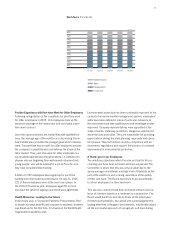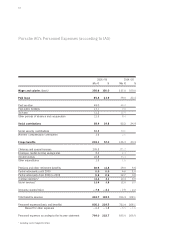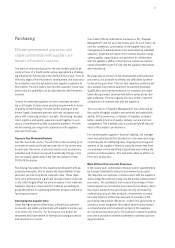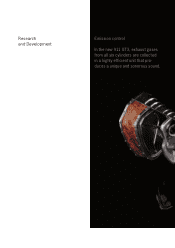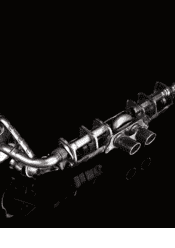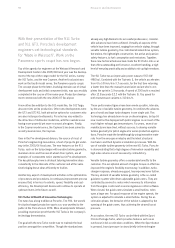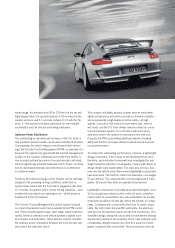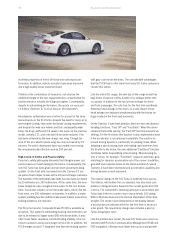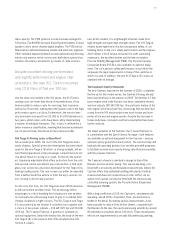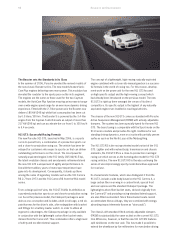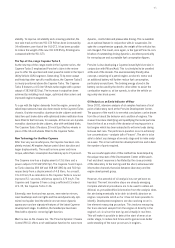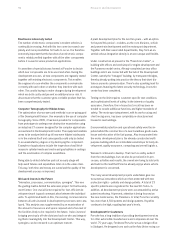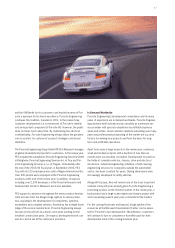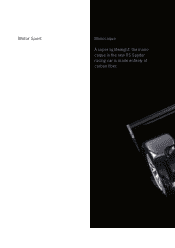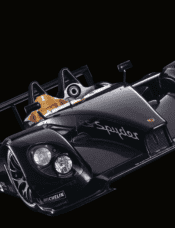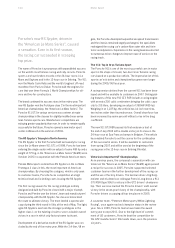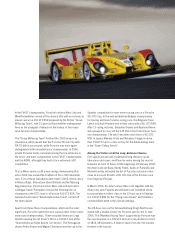Porsche 2005 Annual Report Download - page 93
Download and view the complete annual report
Please find page 93 of the 2005 Porsche annual report below. You can navigate through the pages in the report by either clicking on the pages listed below, or by using the keyword search tool below to find specific information within the annual report.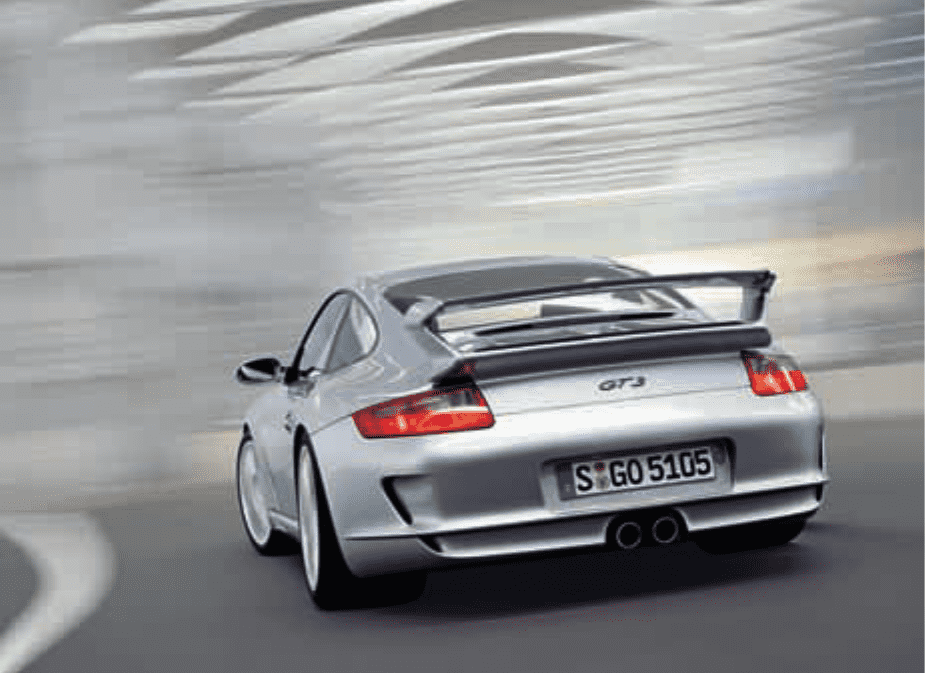
speed range. Acceleration from 80 to 120 km/h in the second
highest gear takes 3.5 seconds instead of 3.8 on manual trans-
mission versions, and 3.3 seconds instead of 3.5 with the Tip-
tronic S. This overboost is particularly ideal for intermediate
acceleration and can shorten overtaking maneuvers.
Optimum Power Distribution
The outstanding acceleration performance of the 911Turbo is
only possible if power transfer can be well-controlled at all times.
Consequently, the vehicle features new all-wheel drive techno-
logy, the Porsche Traction Management (PTM), as standard. It is
based on the experiences gained with the traction management
system on the Cayenne. Additional drive to the front wheels is
now provided actively by means of an electronically controlled,
electromagnetically-actuated multi-disk clutch. Power can there-
fore be distributed optimally even when there is no difference
in rotational speed.
Thanks to this new technology, power transfer can be optimally
adapted to the prevailing driving conditions, whilst fast re-
sponse times ensure that the front axle is engaged in less than
0.1 seconds. If required, and in certain driving situations – such
as when the rear wheels are spinning on ice – all the power is
transferred to the front wheels.
The Porsche Traction Management’s control system is based
on a host of parameters which are evaluated in the PTM control
unit. These include engine torque, steer angle, wheel rotational
speed, lateral acceleration and vehicle dynamics signals such
as oversteer and understeer. These data are used to calculate
the optimum power distribution between the front and rear axle
and control the multi-disk clutch.
This complex and highly dynamic system ensures even better
agility and dynamic performance as well as maximum stability –
and consequently a high degree of active safety – at high
speeds. In practice, this means no more wheel spin, even on
wet roads, and the 911 Turbo always remains safely on course
even at maximum speeds. For customers with more sporty
ambitions, there’s the option of a mechanical rear axle lock.
It assists the PTM, by providing additional dynamic handling
ability and traction, increases lateral acceleration and improves
circuit performance.
To achieve this outstanding performance, however, a lightweight
design is essential. In the course of the development process,
therefore, each individual component was investigated for any
weight reduction potential. Consequently, many modifications to
design details were implemented. The main area of focus, how-
ever, was the vehicle body, where various lightweight components
have been used. The front lid, made from aluminum, now weighs
51 percent less. The composite fiber rear lid weighs just 4.5 kilo-
grams, 62 percent less than an equivalent steel version.
Lightweight construction is normally associated with higher costs.
To find an optimum solution to this conflict of aims, a develop-
ment project for an aluminum door was undertaken. As a result,
it has been possible to drastically reduce the number of compo-
nents. Compared with a steel shell, which has 15 panel compo-
nents, five bolt connections and 85 weld spots, the aluminum
shell has just five aluminum parts and ten bolt connections. This
simplified design, along with associated tool investment savings
and shorter production and assembly times, have reduced costs
considerably. Weight reduction per vehicle is around 14.4 kilo-
grams compared with a steel shell. The new structure also has


